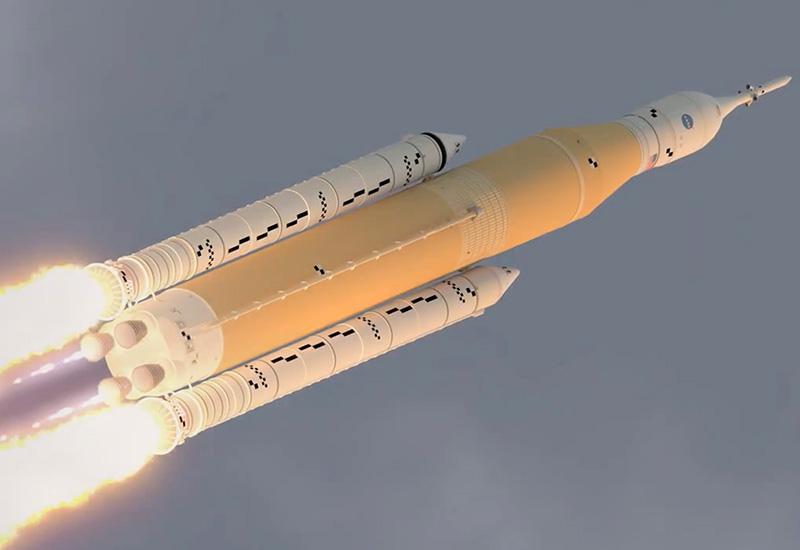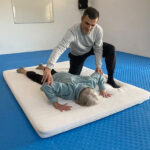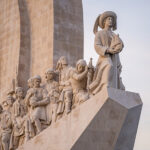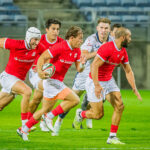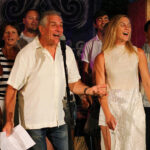Sophie Sadler met retired NASA scientist Paul Bookout, who is enjoying the tranquillity of life in Portugal after a career of launching rockets and facilitating space exploration.
When Paul Bookout was a boy, he made a rocket and his identical twin a plane. This was prophetic as Paul went on to work for NASA and his brother for Boeing. This coincidence could indeed have been written in the clouds as Paul never intended to go to university and started his career in a petrol station!
Paul had a peripatetic childhood – his father, Jackie, was in the US Air Force and his mother was English. While his father was serving in the Vietnam war, Paul’s mother Avril, took the twins and their elder sister, to stay with their maternal grandparents in Carterton in the Cotswolds for a year. Following this, Paul’s father was stationed in England for four years, so Paul lived in the UK between the ages of 5 and 10. He tells me he is very proud of his British heritage.
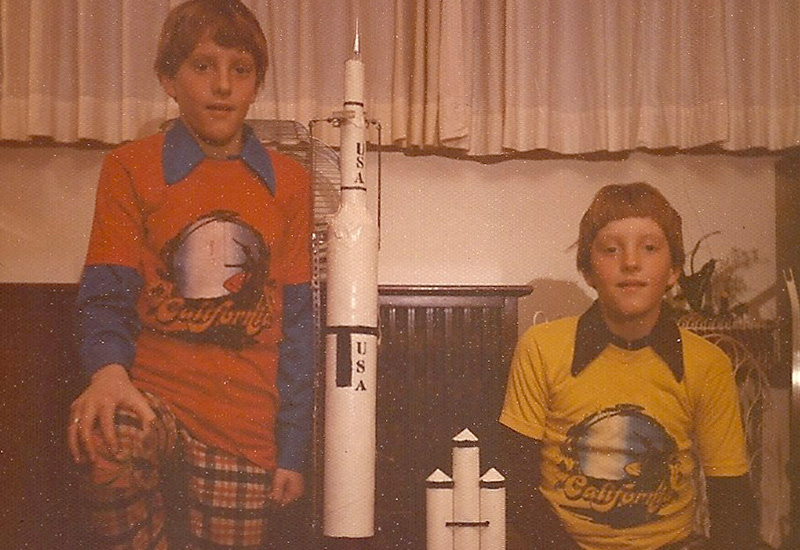
Back in the US, it was an encouraging teacher that persuaded Paul to attend Tennessee Technical University, where he achieved a master’s in Robotics and Mechanical Engineering. He went on to obtain a PhD in Aeronautics in Alabama.
Although NASA (National Aeronautics and Space Administration) generally recruits from interns, Paul was introduced to the programme by a friend when he was 24. Coming from a military background, he was maybe pre-conditioned for the discipline and teamwork required for this demanding project.
Paul worked at the Marshall Space Flight Center (MSFC), a NASA field centre located in Huntsville, Alabama. The MSFC is responsible for designing, developing, and testing the rocket engines and propulsion systems that power NASA’s space exploration missions. It also conducts research in materials science, electronics, and optics, as well as developing applications for space technology that benefit industry, medicine, and national defence.
He started his work as an engineer working in the field of vibration and dynamics. This area of engineering refers to the complex interactions between the rocket’s structure, propulsion system, and the forces generated during the flight that create mechanical vibrations. These vibrations can have a significant impact on the rocket’s performance and stability, potentially causing structural damage, system failures, and even mission failure.
From the mid-1990s to the mid-noughties, Paul helped to design elements of the International Space Station (ISS), in particular, the racks that hold the equipment. The first component of the ISS was launched in 1998. A multi-nation construction project, it is the largest single structure humans have ever put into space. Its main construction was completed between 1998 and 2011, although the station continually evolves to include new missions and experiments.

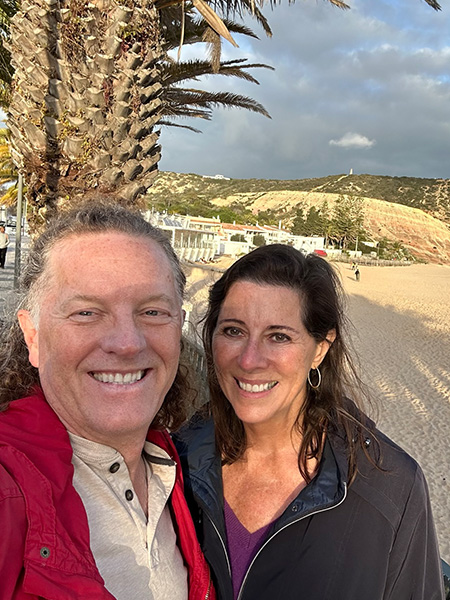
I asked Paul if working in NASA is as cloak and dagger as we are led to believe in the movies. “I was not involved in any of the top-secret projects, so I just got to work on the geeky stuff! It is, however, very stressful because you only get one shot. It can be life or death, so you have to be really familiar with the equipment. NASA also has this credibility and everyone is scrutinising you.”
Some of the lighter elements of Paul’s work included mocking up a concept of a deep space habitat that astronauts could live in on a trip to Mars. “Astronauts can only live in the capsule that lands on Mars for a few weeks, so we were tasked with creating a habitat design where they can eat, sleep and exercise. It will take months to travel to Mars. We were basically mocking up the inside with cardboard so modifications could be made easily. For the exterior, we used existing space station hardware that was used in the development of the ISS. Astronauts and other scientists or engineers would evaluate the design and changes would be made if needed.”
Paul also worked on the development of a module that docked onto the space station carrying supplies. Another project was engineering a life support system which could generate oxygen, process urine and purify water for the ISS. One of the challenges is minimising the space and weight of these components.
While working for NASA, Paul found acting as a support SCUBA diver an enjoyable experience. The space centre has a huge buoyancy tank which is 12m deep, allowing astronauts to train in the closest sensation to weightlessness you can obtain on earth. Paul was responsible for trimming the astronauts in space suits to be neutrally buoyant and the safety of the astronauts while they were in the tank.
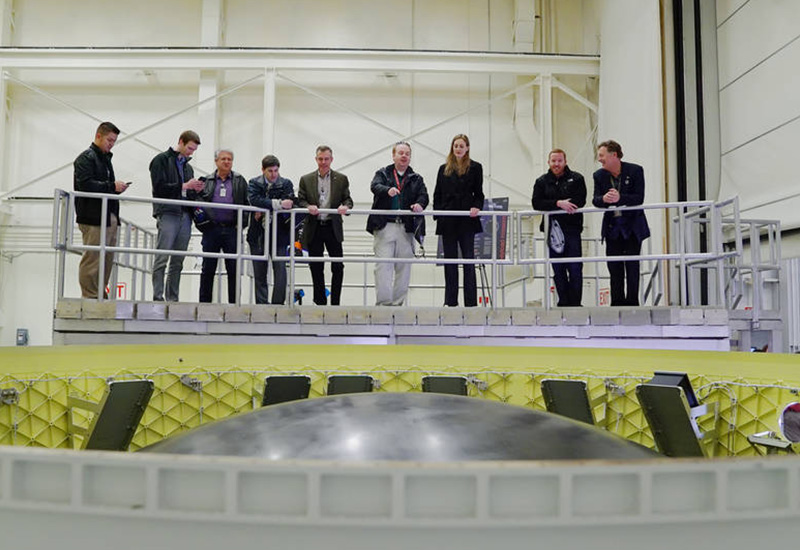
Paul went on to work for the last eight years of NASA’s Space Shuttle programme before it was retired. A reusable spacecraft, it was designed to carry astronauts and payloads into space and was operated by NASA from 1981 to 2011. The shuttle consisted of three main components: the orbiter, the external tank, and the solid rocket boosters. Paul worked on the boosters and had the thrill of experiencing one launch. Although he was not at the launch site of the Kennedy Space Center, he was part of the support control room at the Marshall Space Flight Center, giving information and tech support to the launch control.
The space shuttle was used for a variety of missions, including deploying and repairing satellites, conducting scientific experiments, and building and servicing the International Space Station. It also carried astronauts on missions to repair the Hubble Space Telescope and conduct space research.
Paul’s last project for NASA was helping CubeSats be integrated on the rocket, a challenging and rewarding project that saw several CubeSats released from the Space Launch System or, as it was known to NASA, the SLS. Paul’s title was Secondary Payload Integration Manager for the Artemis I Mission, which was to launch small satellites into space to carry out experiments. Each cost between 5 and 10 million and needed to be the size of a large shoe box and light so as not to hinder the rocket they were catching a lift on. Paul worked on two CubeSats that were engineered by Japan and they both made it onto the mission, which was one of the highlights of his career.
Paul worked with NASA for 32 years, during which time he met his wife at church and had two children. I ask him if being a Christian and a scientist is a contradiction in terms. “I do not see Christianity and science in conflict. To me, there is a lot that science can’t explain and this is where I see God.”
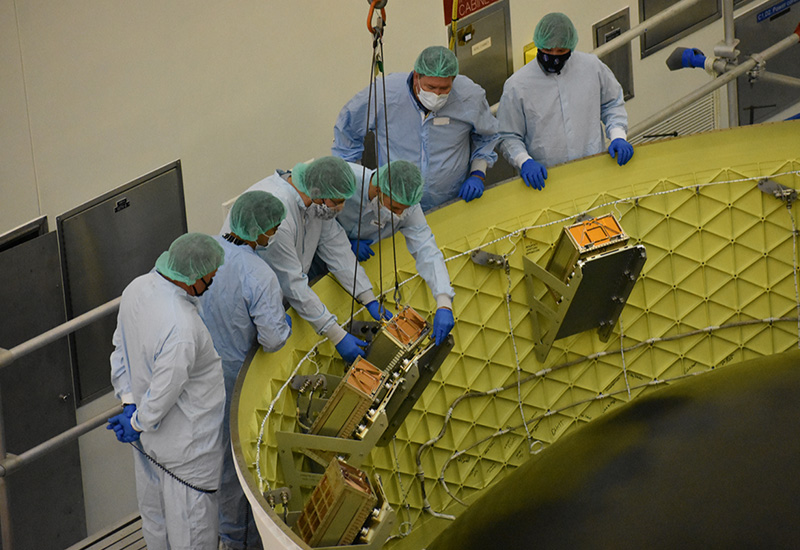
Paul and Morri retired to Tennessee, where they lived for two years until they got itchy feet. They discovered Portugal when they travelled here with friends who were looking to buy property in the Golden Triangle. Paul and his wife, however, fell in love with the western Algarve and have since purchased two properties in Praia da Luz. Paul has enjoyed diversifying his engineering skills into property refurbishment while exploring the area they now think of as home. They also attend and have become more involved with St Vincent’s church.
Currently, Paul and Morri spend a few months a year in Portugal, but they are considering making the Algarve a more permanent base and Paul would love to find an opportunity to lecture and teach at the University of the Algarve.
Today, the MSFC is working on the Space Launch System (SLS), which will be NASA’s most powerful rocket ever built, and the Artemis programme, which aims to return humans to the moon by 2024. I am keen to find out from Paul if he thinks that a Mars exploration that uses his habitat will ever become a reality. “I am sure there will be a mission to Mars in the 2040s.”
In a remarkable life, Paul has, in all senses of the word, reached for the stars and, after orbiting the earth, has landed in Praia da Luz, where he and Morri are sure to be a welcome addition to the community.
Paul is an acclaimed international speaker and will be presenting an illustrated talk on NASA’s New Space Rocket to the Moon and Mars. All proceeds with go to St Vincent’s Church.
The talk will take place on 13 April from 6 pm to 8 pm in the Salão Hall behind Luz Church. Tickets cost 20€ per adult and 10€ for a child, including a welcome drink and cold buffet. Contact louisecplayer@gmail.com for more information.
Main image: The Space Launch System (SLS)
